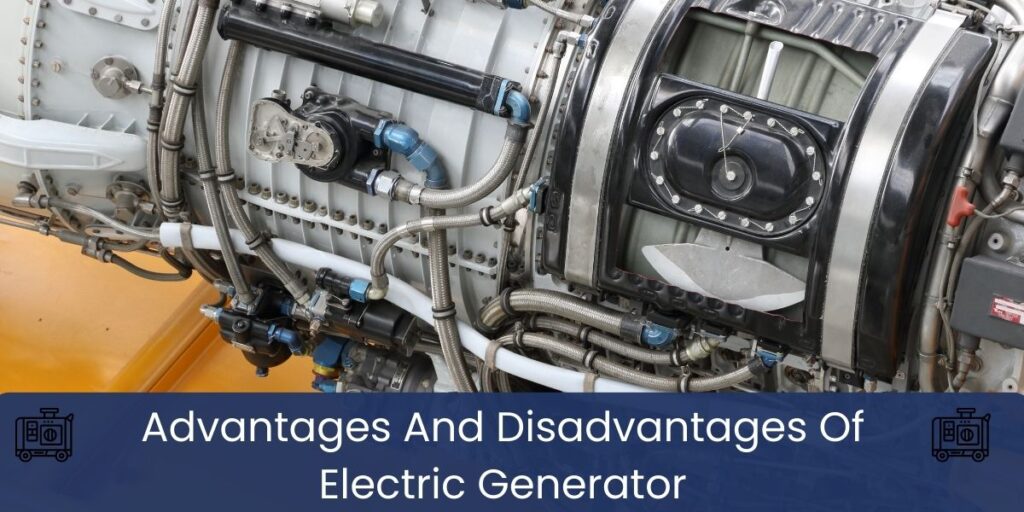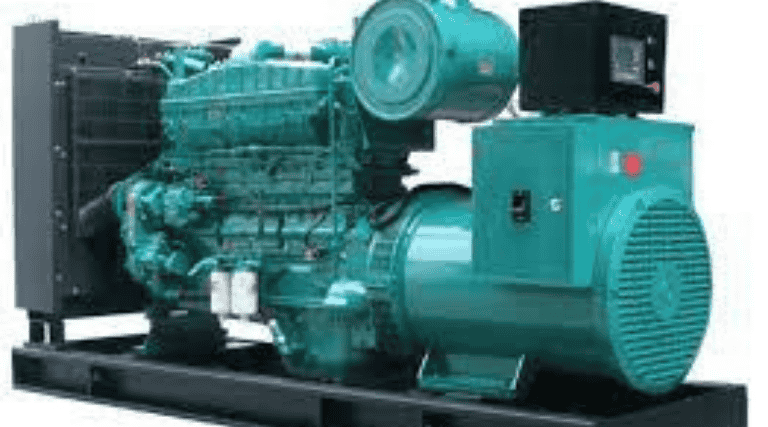- Home
- About Us
- Blog
- Services
- Equipment
- Online Testing
- Offline Testing
- Partial-Discharge
- CPC 100 Multifuncational Switchyard
- Vlf Tan Delta Measurement
- Current Signature Analysis
- Relay Measurement
- CT Measurement
- SFRA Measurement
- Moisture Analysis by PDS & PDC
- Turns-Ratio-Measurement
- Winding Resistance Measurement
- OLTC-DCRM-Measurements
- Frequency Response stray Losses
- Circuit Breaker Analyzer & DCRM Test
- Circuit Breaker Timer
- Contact Resistance Meters
- Particle Count Tester-Pamas
- TRAX Multifunctional switchyard Diagnostic Test
- TESTRANO-600
- Surge Tester-jabbals
- Circuit Breaker Analyzer
- Gallery
- Careers
- Contact Us
Advantages And Disadvantages Of Electric Generator

An electric generator, also known as a Dynamo or an Alternator, is a device that converts mechanical energy into electrical energy. It functions on the Principle of Electromagnetic Induction, discovered by Michael Faraday in the early 19th century.
The essential elements of an electric generator include a stationary part known as the Stator and a rotating part called the Rotor. The Stator consists of a series of wire coils arranged in a circular pattern, while the Rotor is a shaft with a set of electromagnets or permanent magnets attached to it. The Rotor is connected to a mechanical power source, such as a turbine or an engine, which provides the rotational energy.
When the Rotor spins, it induces a changing magnetic field in the stator coils. Faraday’s law of Electromagnetic Induction states that this changing magnetic field generates an electric current to flow in the wire coils. The induced current can be harnessed and utilised as electrical power.
Electric Generators are commonly used in various applications where a portable or backup power source is needed. They can be found in power plants, where they are driven by steam turbines, gas turbines, or water turbines to generate electricity on a large scale. Portable generators are also available for smaller-scale applications, such as providing electricity during power outages or in remote areas.
Electric Generators Examples
There are various types of electric generators designed for different applications. Here are a few examples of electric generators:
- Steam Turbine Generator: This type of generator is commonly used in power plants. A turbine is spun by the steam generated by burning fossil fuels or using nuclear energy connected to an electric generator to generate electricity.
- Gas Turbine Generator: Gas turbine generators are used in power plants as well as for smaller-scale applications. They burn natural gas or liquid fuels to drive a turbine attached to an electric generator to generate electricity.
- Hydroelectric Generator: Hydroelectric generators utilise the power of flowing or falling water to produce electricity. Water is utilised to spin a turbine, which drives the generator. Hydroelectric power plants often rely on dams or river systems for water supply.
- Wind Turbine Generator: Wind turbine generators convert wind energy into electrical energy. Strong winds spin the turbine blades, which drive the generator to produce electricity. Wind farms consist of multiple wind turbines connected to a power grid.
- Diesel Generator: Diesel generators are commonly used as backup power sources in various settings. They run on diesel fuel and consist of an internal combustion engine connected to a generator. Diesel generators are portable, efficient, and widely used for emergency power supply.

Uses Of an Electric Generator
Electric generators have various uses and applications across various industries and settings. Here are some common uses of electric generators:
- Power Generation: Electric generators are widely used in power plants to generate electricity on a large scale. They are driven by various energy sources such as steam turbines, gas turbines, or water turbines. Power plants provide electricity to residential, commercial, and industrial areas.
- Backup Power: Generators are commonly used as backup power sources in case of power outages or areas with unreliable or limited access to the electrical grid. To ensure uninterrupted operations, they can provide temporary electricity to homes, buildings, hospitals, data centres, and critical infrastructure.
- Remote Locations: Electric generators are essential in remote or off-grid areas without access to the primary power grid. They can provide electricity for remote communities, construction sites, campsites, outdoor events, and expeditions.
- Construction and Industrial Sites: Generators are extensively used in construction sites and industrial facilities where a temporary or independent power supply is required. They can power construction tools, heavy machinery, lighting systems, and other equipment.
Advantages Of An Electric Generator
Electric generators offer several advantages in various applications. Here are some of the key advantages:
- Power Generation Flexibility: Electric generators can generate electricity in diverse locations and situations. They can be used in remote areas, construction sites, emergencies, and any location without reliable access to the power grid. Generators allow for on-demand power generation where and when it is needed.
- Backup Power Supply: Generators serve as reliable backup power sources during power outages or in areas with unreliable electricity supply. They can provide temporary electricity to homes, businesses, hospitals, and critical infrastructure, ensuring uninterrupted operations and essential services.
- Quick Power Availability: Generators can provide electricity almost immediately after starting. This quick power availability is crucial in emergencies, construction projects, or when time-sensitive operations must continue without interruption.
- Energy Source Flexibility: Generators can be designed to operate on various energy sources, such as diesel, natural gas, propane, gasoline, steam, or renewable sources like wind or solar. This versatility allows using different fuel types based on availability, cost, or environmental considerations.
- Economic Benefits: Electric generators can lead to economic benefits in several ways. They can reduce downtime and productivity losses during power outages and provide power for remote operations. In regions with unreliable power grids, generators can help maintain operations, attract investments, and promote economic growth.
- Emergency and Disaster Preparedness: Generators are essential components of emergency preparedness plans. They can provide power during natural disasters, emergencies, or situations where the main power grid is disrupted. This ensures that critical services, communication systems, and life-saving equipment remain operational.
- Environmental Considerations: Some generators are designed to operate on renewable energy sources, such as wind or solar. This allows cleaner power generation reducing reliance on fossil fuels and minimising environmental impact.
Disadvantages Of An Electric Generator
While electric generators have many advantages, they also come with certain disadvantages. Here are some of the disadvantages associated with electric generators:
- Fuel Dependency: Most generators require a fuel source such as diesel, gasoline, natural gas, or propane to operate. This dependency on fuel means ongoing fuel costs, fuel availability considerations, and the need for fuel storage. Additionally, fluctuations in fuel prices can impact the operational costs of running a generator.
- Environmental Impact: Many generators, particularly those powered by fossil fuels, emit greenhouse gases, pollutants, and particulate matter during operation. These emissions contribute to air pollution and have environmental implications, including climate change and negative health effects. However, cleaner alternatives are available, such as generators powered by renewable energy sources like wind or solar.
- Limited Lifespan: Generators have a finite lifespan and may require replacement or major repairs after a certain period. Factors such as usage intensity, maintenance practices, and operating conditions can impact the longevity of a generator. Planning for the eventual replacement of a generator is necessary to ensure continued power supply.
- Safety Considerations: Generators pose certain safety risks if improperly operated or maintained. Risks include the potential for fuel leaks, electrical hazards, fire hazards, and carbon monoxide poisoning if generators are not installed or used correctly. Following proper safety protocols and guidelines is crucial to mitigate these risks.
- Limited Efficiency: Generators have an efficiency rate determining how effectively they convert fuel or mechanical energy into electrical energy. Some energy is lost as waste heat during conversion, leading to lower overall efficiency than direct grid-supplied electricity. However, advancements in generator technology have improved efficiency levels in recent years.
Conclusion
Electric generators have numerous advantages, including flexibility, backup power supply, quick availability, and emergency preparedness.
However, electric generators have disadvantages: fuel dependency, environmental impact, noise and vibration, maintenance and operational costs, limited lifespan, size and space requirements, startup time, efficiency, exhaust and emission management, and safety considerations.
Overall, electric generators play a crucial role in various industries, providing reliable power in diverse settings and ensuring the availability of electricity for a wide range of applications.
FAQs
1. What fuels can be used to power an electric generator?
Various fuels, including diesel, gasoline, natural gas, propane, and renewable energy sources like Wind or Solar energy, can power electric generators. The fuel choice depends on factors such as availability, cost, environmental impact, and the specific application.
2. Can electric generators be used as a primary power source?
Electric generators are typically used as backup power sources or when access to the primary power grid is limited or unreliable. While they can provide temporary or off-grid power, they are not typically used as the primary source of electricity in everyday situations due to factors such as fuel dependency, maintenance requirements, and operational costs.
3.Can electric generators produce clean or renewable energy?
Electric generators can produce clean or renewable energy depending on the type of generator and the fuel used. Generators powered by renewable sources like Wind or Solar energy produce clean electricity with minimal environmental impact. However, generators running on fossil fuels emit pollutants and contribute to carbon emissions.
